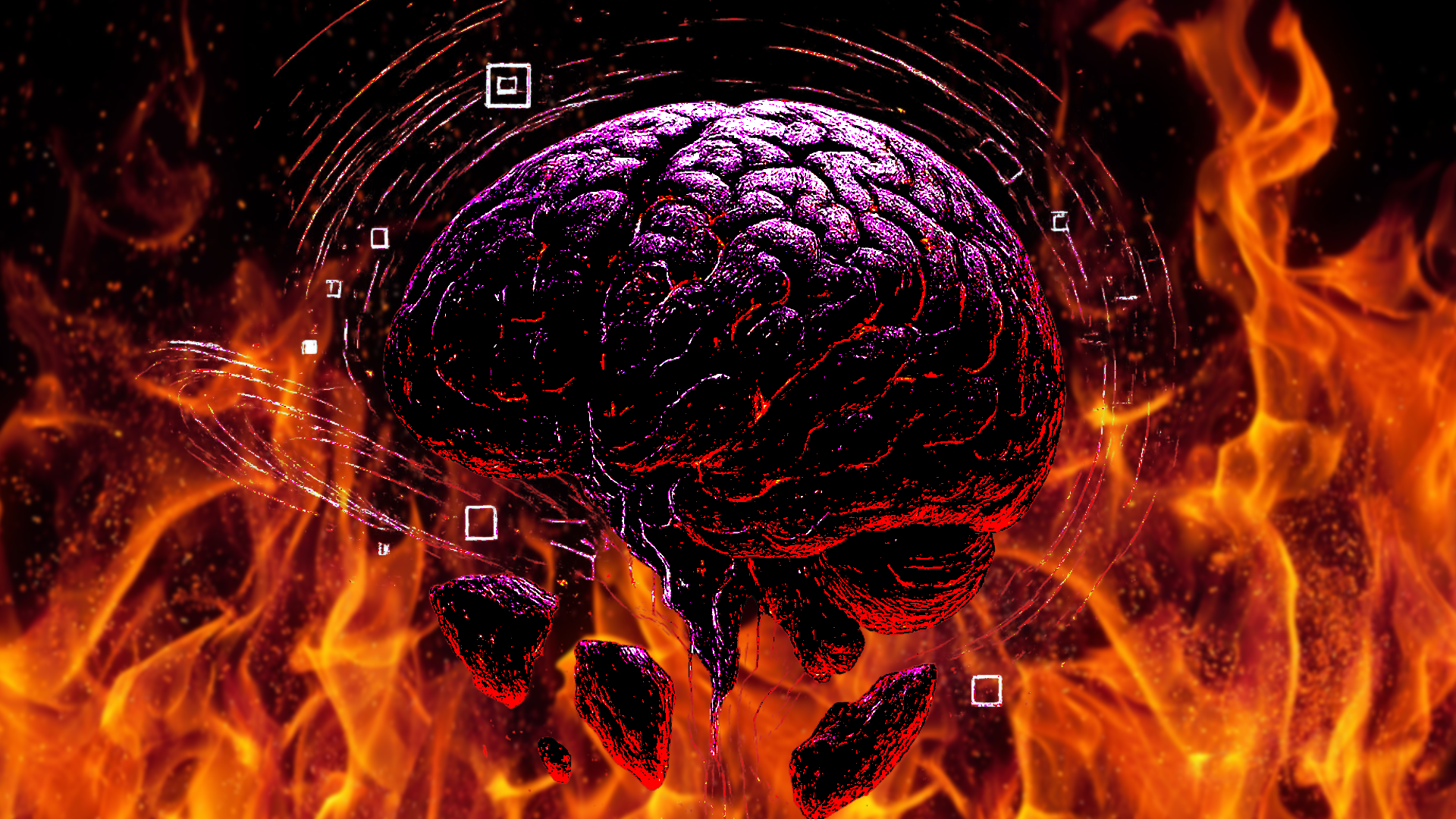The Real-Life Fallout: How It Shows Up in Your Day-to-Day
Read:
- The Poisonous Outcome of Short-Form Content – Part 1: A Hijacked Reward System
- The Poisonous Outcome of Short-Form Content – Part 2: A Hijacking in Real Time
- The Poisonous Outcome of Short-Form Content – Part 3: Intrusive Thoughts and Mental Imagery Pollution
- The Poisonous Outcome of Short-Form Content – Part 4: How It Shows Up in Your Day-to-Day
- The Poisonous Outcome of Short-Form Content – Part 5: Ideological Echo Chambers and Identity Hijack
- The Poisonous Outcome of Short-Form Content – Part 6: How to Detox, Rewire, and Return to Clarity
You don’t need a diagnosis to know something feels off.
You check your phone without thinking. You scroll to feel something—or maybe to stop feeling everything. You struggle to read more than a page, or finish a task that used to feel easy. You find yourself irritable, distracted, oddly joyless. Not broken, exactly—but disoriented.
This is the real-life fallout of chronic short-form content consumption. The symptoms don’t scream. They whisper. And they show up in the quiet spaces between moments: how you handle boredom, how you show up in conversations, how you relate to your own thoughts.
1. The Collapse of Attention and Follow-Through
Short-form content fragments the brain’s attentional system by training it to expect novelty every few seconds. Over time, this conditions your mind to constantly seek stimulation and resist sustained effort.
Studies on attention and media multitasking show that individuals frequently exposed to rapidly shifting content experience diminished executive control and impaired task-switching ability (Ophir et al., 2009). As attention spans narrow, deep focus becomes not just difficult—but uncomfortable.
What this looks like day-to-day:
- Struggling to finish books, articles, or even a conversation without drifting
- Starting tasks with motivation but abandoning them minutes later
- Feeling fidgety or mentally absent during activities that used to be calming
2. Chronic Procrastination and the Dopamine Rebound
Your brain adapts to short-form content by associating boredom or effort with discomfort, and distraction with relief. This creates a cognitive loop of avoidance: as soon as something feels demanding, your brain seeks out the quick dopamine of swiping or refreshing.
This mirrors patterns seen in behavioral addictions, where the reward circuitry overrides long-term planning in favor of immediate gratification (Volkow et al., 2010).
What this looks like day-to-day:
- Opening a work tab, then checking social media “for a second”
- Waiting until the last possible moment to start something important
- Feeling anxious or avoidant about anything that requires mental effort
3. Emotional Flattening and Low-Grade Dysphoria
The overstimulation of constant swiping desensitizes your brain to natural sources of pleasure. After watching dozens of emotionally charged videos, real life may feel flat, too slow, or emotionally unfulfilling.
This can lead to a form of anhedonia—the reduced ability to experience pleasure—commonly seen in depression and addiction models (Treadway & Zald, 2011).
What this looks like day-to-day:
- Diminished enjoyment from things you used to love (music, nature, food)
- Feeling “meh” even when nothing is wrong
- Needing constant background stimulation to avoid a sense of emptiness
4. Mental Fatigue and Cognitive Fog
Each scroll, swipe, or tap requires your brain to make micro-decisions: Do I like this? Do I skip it? What did I just watch? These seemingly small choices accumulate, draining cognitive resources.
This can lead to decision fatigue, a condition where mental energy is depleted by too many trivial decisions (Baumeister et al., 1998).
What this looks like day-to-day:
- Feeling mentally “foggy” despite getting enough sleep
- Difficulty organizing thoughts or prioritizing tasks
- Avoiding decisions because they feel too overwhelming
5. Increased Reactivity and Decreased Regulation
Short-form content conditions the brain for emotional whiplash—intense joy, sadness, anger, or outrage in rapid succession. This trains the nervous system toward hyper-reactivity.
At the same time, the prefrontal cortex—which manages emotional regulation—is overwhelmed by the need to constantly re-contextualize. Emotional resilience decreases.
What this looks like day-to-day:
- Snapping over minor annoyances
- Feeling emotionally “off” or volatile
- Struggling to slow down before reacting
6. Disconnection from Self and Others
The Default Mode Network (DMN), the brain network responsible for self-reflection and emotional processing, is disrupted by constant input (Andrews-Hanna et al., 2014). Without quiet time, we lose access to our own thoughts, values, and inner voice.
What this looks like day-to-day:
- Feeling disconnected from your goals, desires, or sense of purpose
- Difficulty being fully present with others
- Avoiding stillness because it feels unfamiliar or uncomfortable
This Isn’t Burnout. It’s Sensory Overload.
Burnout implies you were doing too much. But what if the problem isn’t effort, but input?
Short-form content floods your mind with unresolved emotion, fragmented thoughts, and artificial intensity. It leaves you overstimulated, yet undernourished. It’s not that you’re lazy. Your brain is overwhelmed. Your nervous system is overstretched.
And the first step back isn’t doing more. It’s subtracting what no longer serves.
How to Spot and Soften the Fallout
- Create micro-moments of stillness: Even 2 minutes of silence can help reset attention.
- Practice single-tasking: Rebuild focus by doing one thing, slowly, without switching.
- Journal or voice-note: Externalize foggy thoughts to regain clarity.
- Seek real connection: Call a friend. Talk without distractions. Let presence rewire you.
- Honor boredom: Let your mind wander without interference. Boredom births insight.
You don’t have to quit your phone or go off the grid. But you do have to become more intentional. Because your attention, your energy, and your clarity are far too valuable to give away unconsciously.
Works Cited:
- Andrews-Hanna, Jessica R., et al. “The Default Network and Self-Generated Thought: Component Processes, Dynamic Control, and Clinical Relevance.” Annals of the New York Academy of Sciences, vol. 1316, no. 1, 2014, pp. 29–52. https://doi.org/10.1111/nyas.12360
- Baumeister, Roy F., et al. “Ego Depletion: Is the Active Self a Limited Resource?” Journal of Personality and Social Psychology, vol. 74, no. 5, 1998, pp. 1252–65. https://doi.org/10.1037/0022-3514.74.5.1252
- Ophir, Eyal, et al. “Cognitive Control in Media Multitaskers.” Proceedings of the National Academy of Sciences, vol. 106, no. 37, 2009, pp. 15583–87. https://doi.org/10.1073/pnas.0903620106
- Treadway, Michael T., and David H. Zald. “Reconsidering Anhedonia in Depression: Lessons from Translational Neuroscience.” Neuroscience and Biobehavioral Reviews, vol. 35, no. 3, 2011, pp. 537–555. https://doi.org/10.1016/j.neubiorev.2010.06.006
- Volkow, Nora D., et al. “Addiction: Decreased Reward Sensitivity and Increased Expectation Sensitivity Conspire to Overwhelm the Brain’s Control Circuit.” BioEssays, vol. 33, no. 9, 2011, pp. 737–744. https://doi.org/10.1002/bies.201100072
Read:
- The Poisonous Outcome of Short-Form Content – Part 1: A Hijacked Reward System
- The Poisonous Outcome of Short-Form Content – Part 2: A Hijacking in Real Time
- The Poisonous Outcome of Short-Form Content – Part 3: Intrusive Thoughts and Mental Imagery Pollution
- The Poisonous Outcome of Short-Form Content – Part 4: How It Shows Up in Your Day-to-Day
- The Poisonous Outcome of Short-Form Content – Part 5: Ideological Echo Chambers and Identity Hijack
- The Poisonous Outcome of Short-Form Content – Part 6: How to Detox, Rewire, and Return to Clarity




